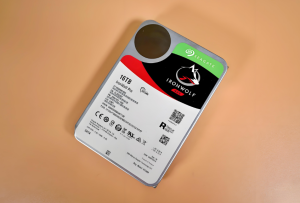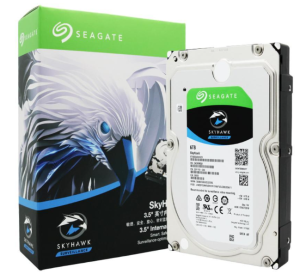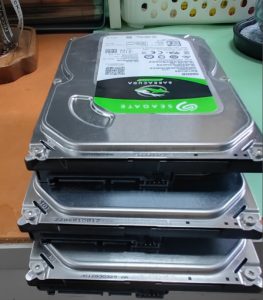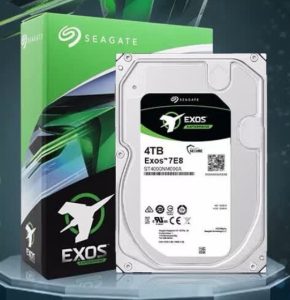“You have no idea how difficult this trip was for us. Multi-camera 4K recording, triple copies for organization, backup, and upload – before even entering the editing process, we’re already hard-pressed by various materials…” This was yet another gripe from my video colleagues after a recent shooting project.
Despite the complaints, we can’t skip the necessary time and effort due to past experiences. However, as content quality and timeliness demands soar from 1080P to 4K@60, some of our “veteran” storage and material processing tools struggle to keep up, becoming weaknesses in our workflow. Especially with AI and AIGC technologies integrating into the creative process, we must not only focus on enhancing computational power but also storage capacity.
At the recently concluded 31st Beijing International Radio, TV & Film Exhibition (BIRTV), the latest achievements in radio, television, film, and technology industries were showcased across fields like new media, ultra-high definition, future television, generative AI, and virtual reality production. Notably, as AI accelerates its integration into every aspect of media content production, and the industry demands greater efficiency, innovation, and data asset security, storage solutions have garnered increased attention amidst the ever-growing data volume. According to IDC, the global datasphere will approach 160ZB by 2024, and driven by technologies like AI, the data size will more than double to exceed 393ZB by 2028.
During BIRTV 2024, Seagate presented a wide range of data storage products and solutions, including LaCie’s rugged portable hard drives, the Seagate IronWolf and IronWolf Pro series, Seagate Exos, Seagate Nytro, and Seagate SkyHawk, covering portable hard drives, NAS, and enterprise-level storage. Collaborating with partners, Seagate ensures that its storage products and solutions meet the heightened storage demands of the AI era while leveraging AI advantages to empower product innovation and enhance user experience.
In the era of smart connectivity, users are highly sensitive to storage capacity. The device most likely to experience a “storage crisis” first is the smartphone – burdened by WeChat files, video and TV show caches, and large app sizes, shooting photos and videos rapidly consume available storage, exacerbating the already limited space. For heavy smartphone users, 512GB of storage is barely sufficient, and often, an external hard drive or NAS is needed for creative recording.
To some extent, the smartphone’s storage crisis stems from the fact that everyone can now be a content creator. Image capturing, social entertainment apps, and more contribute to the accumulation of data over time. For professionals in the broadcasting, film, television, photography, and other media entertainment industries, capacity is just one of the easier aspects to address in resolving storage bottlenecks – simply by expanding storage space. However, these professionals have even higher standards for storage performance, security, and reliability, leading to stricter criteria when selecting storage solutions.
At the BIRTV 2024 exhibition, Seagate also showcased a diverse range of storage products and solutions tailored for professional creators. For those engaged in outdoor filming or shooting in extreme environments, Seagate’s premium brand LaCie enjoys high acclaim. Its LaCie Rugged Mini SSD and LaCie Rugged USB-C portable hard drives offer a compelling combination of portability, reliability, and high performance. The compact design easily fits into backpacks or pockets, while the highly recognizable orange silicone casing, featuring water-resistance, dustproofing, shock-resistance, and compression tolerance, safeguards data security even in adverse weather conditions, unexpected drops, or harsh environments, ensuring valuable footage remains intact. Additionally, the LaCie Rugged Mini SSD boasts a transfer speed of up to 2000MB/s, facilitating more efficient data transmission and backup.
For post-production editors requiring massive storage capabilities, Seagate showcased the LaCie 2big Dock dual-bay desktop hard drive, offering up to 40TB of storage space. Paired with multiple card slots and connectivity expansion options, it streamlines desktop clutter and enhances device interconnectivity and data transfer efficiency.
Another noteworthy feature is the integration of Seagate IronWolf Pro enterprise-class hard drives within the LaCie 2big Dock. Employing CMR (Conventional Magnetic Recording) technology, these drives offer capacities up to 24TB. The IronWolf Pro series boasts a workload rate of up to 550TB/year and an MTBF (Mean Time Between Failures) of 2.5 million hours, enabling 24×7 uninterrupted service in multi-bay and multi-user collaborative environments, withstanding prolonged and intensive workloads with unparalleled reliability.
Beyond desktop storage solutions, the Seagate IronWolf and IronWolf Pro series hard drives have emerged as essential components in NAS (Network Attached Storage) products, increasingly favored by both individual users and enterprise clients in recent years.
The IronWolf and IronWolf Pro series offer various capacity options, exceptional performance, and reliability, effortlessly meeting the demands of professional users. Both series are equipped with the IHM (IronWolf Health Management) system, empowering users with comprehensive control over the health of their hard drives and NAS systems through prevention, intervention, and recovery recommendations. Seagate also provides a complimentary three-year data recovery service from the original manufacturer for IronWolf and IronWolf Pro drives, with a success rate exceeding 90%.
Collaborating with partners such as QNAP, ZSPACE, and TerraMaster, Seagate has introduced a diverse array of NAS solutions tailored for various application scenarios. Crucially, addressing the pain points of NAS users, Seagate and its partners have not only met demands for differentiation and scalability but also lowered the barriers to entry by leveraging hardware and software innovations to make NAS easier to use, more convenient, and longer-lasting. Furthermore, Seagate and its partners have infused AI into NAS products, enabling the visual and efficient organization, categorization, selection, and retrieval of massive data sets.
Efficient and secure data storage is merely the first step; the subsequent task lies in accessing and unlocking the value of data assets. In the realm of enterprise-level and data center storage, fully realizing the potential of data also poses diverse demands on storage solutions, which encompass not just enhancing performance but also reducing total cost of ownership (TCO) and addressing the pain points of AI, AIGC, and edge applications.
At BIRTV 2024, tailored for hyperscale users and enterprise data centers, Seagate unveiled its Galaxy, Nytro, and IronWolf series, comprehensively catering to massive data storage requirements while satisfying the new demands of data centers for performance, efficiency, and storage density, thereby contributing to cost reduction and efficiency enhancement in the optoelectronics industry. Specifically for the Video Image Applications (VIA) market, Seagate’s IronWolf AI and IronWolf drives effectively tackle the escalating demand for massive data at the edge.
The ability to encompass various application scenarios in the media industry stems not only from Seagate’s comprehensive product portfolio but also from its technological prowess accumulated over years of deep engagement in the storage sector. One notable achievement is the Mozaic 3+ platform, which surpasses the bottleneck of magnetic media storage technology by achieving a surface density of 3TB per disk.
Currently, there are two primary approaches to increasing hard drive capacity: incorporating more disks or enhancing surface density. The former involves adding extra disks, heads, and electronics, leading to higher acquisition costs, power consumption, and carbon emissions. Conversely, the latter enables greater capacity with the same or fewer disks, heads, and electronics, translating into lower TCO and fostering sustainability—a key advantage of the Mozaic 3+ technology platform.
At BIRTV, Seagate showcased several core technologies underlying Mozaic 3+, including Superlattice Platinum Alloy Media, Plasma Writer, Seventh-Generation Spin-Torque Electronic Reader, and 12nm Integrated Controller.
Empowered by Mozaic 3+, Seagate’s Galaxy Exos hard drives have doubled their capacity within the same space, with a 45% reduction in power consumption per terabyte. Moreover, the 2024 launch of Mozaic 3+ marks just a milestone; Seagate’s disclosed areal density innovation roadmap anticipates the introduction of Mozaic 4+ (4TB+ per disk) in 2025-2026 and Mozaic 5+ (5TB+ per disk) in 2027-2028. The continuous breakthroughs in areal density signify the expansion of hard drive capacity, catering to the rapidly growing storage demands of the AI era.
The surge in popularity of large models and AIGC has propelled AI to new heights in the IT landscape. On one hand, it spurs new demands on IT infrastructure, driving the development of computing power, transportation capacity, and storage capacity. On the other hand, AI’s integration into various industries fosters numerous innovative business models, resulting in concurrent growth in data volume and value. This trend is not limited to the media and entertainment industry; from individual users to professional creators and enterprises, the importance attached to data assets is unprecedented.
For Seagate, the digital-intelligence era ushered in by AI presents immense opportunities. Its increasingly comprehensive product matrix and technological breakthroughs like Mozaic 3+ underpin the development of data-intensive applications. Collaborating with partners, Seagate not only meets the diverse market demands driven by the AI wave and fuels AI development but also leverages AI technological innovations to empower its products and solutions, ensuring more efficient, convenient, secure, and reliable data storage and processing. This, in turn, provides accurate storage capabilities tailored to various scenarios and demands for consumers, enterprises, and industries alike.




